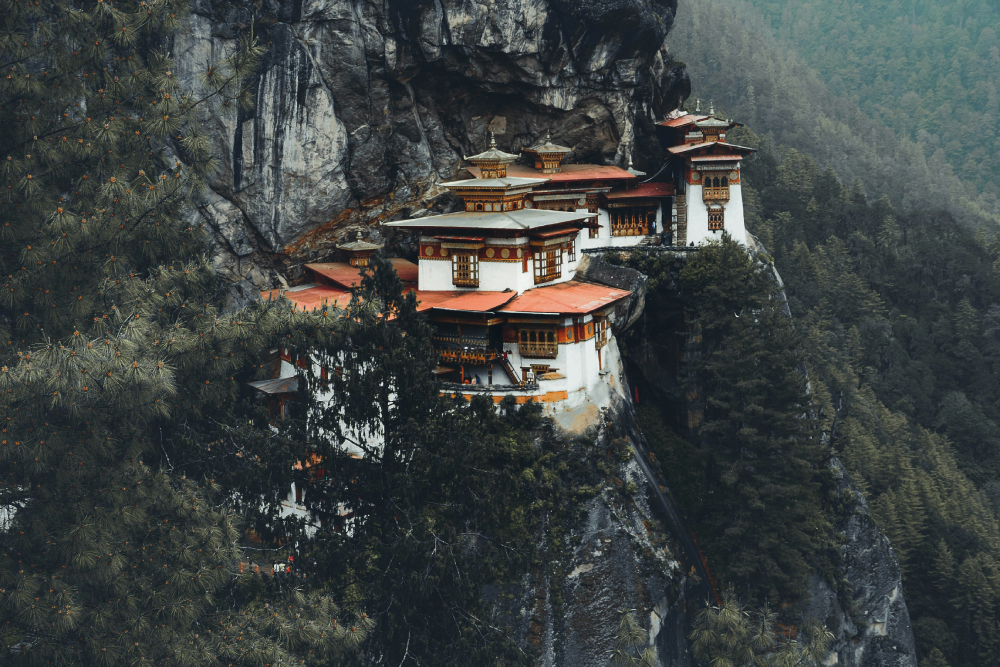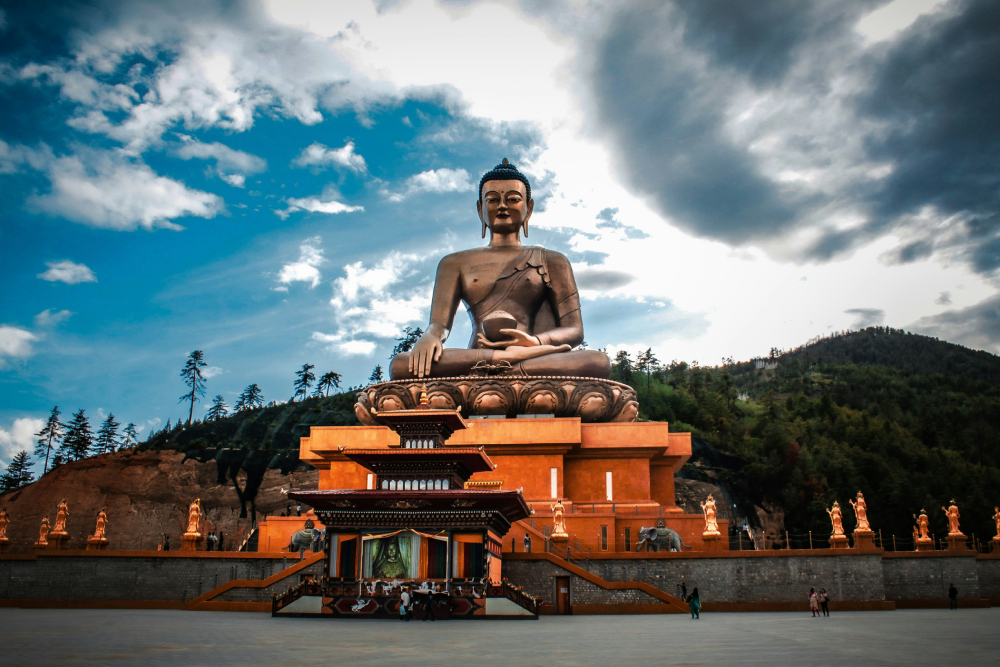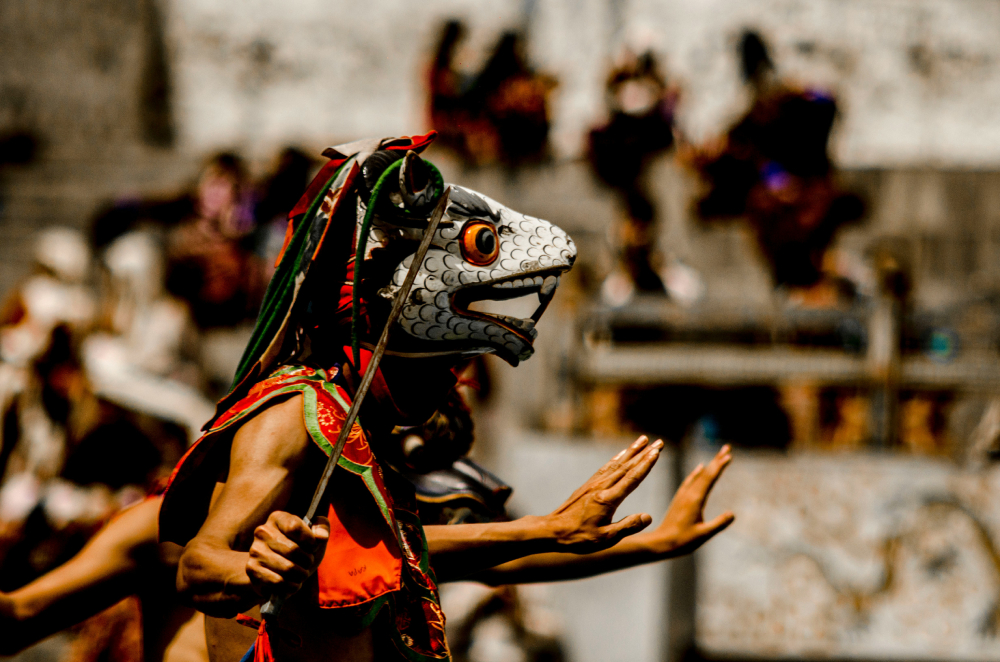Welcome to our comprehensive Bhutan travel guide. This article will provide you with all the essential information you need to make the most of your trip to this beautiful Himalayan kingdom. From the best times to visit to must-see attractions, we've got you covered.
About Bhutan

Bhutan, known as the “Land of the Thunder Dragon,” is a small Himalayan kingdom. It is famous for its stunning natural beauty and rich cultural heritage. Bhutan measures national progress through ‘Gross National Happiness.’
The country opened its borders for tourism in 1974. Since then, Bhutan has carefully managed visitor numbers. It is happening by implementing a Sustainable Development Fee (SDF) per person per day. This policy ensures tourism benefits local communities. It also helps preserve Bhutan’s natural and cultural heritage. However, Indian passport holders do not require a visa to enter Bhutan but must obtain a permit.
Visitors are attracted to Bhutan’s majestic monasteries and ancient fortresses, known as Dzongs. They also enjoy the vibrant festivals called Tshechu. The warm and genuine hospitality of the people is another highlight.
What is there in Bhutan?
The capital city of Bhutan, Thimphu offers a mix of modernity and tradition. It has busy markets and the impressive Thimphu Dzong. The city is also home to the serene Buddha Dordenma statue.
Paro, the primary entry point for international visitors via Paro airport, is known for the iconic Tiger’s Nest Monastery, also called Taktshang Goemba. It offers breathtaking trekking opportunities. Visitors can gain insights into Bhutanese spirituality here.
Punakha is famous for its stunning Punakha Dzong. This Dzong is situated at the junction of two rivers. It reflects Bhutan’s architectural and historical significance.
Bhutan is very committed to environmental conservation. It has planned protected areas. This includes 5 national parks, 4 wildlife sanctuaries, and 1 nature reserve.
Adventure enthusiasts can explore many trails through places. They are like the lush Paro Valley, Punakha Valley, and Phobjikha Valley. The rugged Black Mountains in central Bhutan offer more challenging trails. These areas are perfect for trekking, mountain biking, and bird-watching.
Tourists can experience local culture by staying at Bhutan’s homestays. They can enjoy home-cooked meals and engage with Bhutanese families. Tasting Bhutanese cuisine, especially ‘ema datsi,’ adds another aspect to the travel experience. It is a dish made with chilli peppers and cheese.
Best Time to Visit Bhutan

The perfect time to explore Bhutan depends upon your preferences. To have a pleasant experience, prefer your trip to Bhutan during spring and fall. Spring is from March to May and autumn during September to November
During these times, the weather is pleasant, with clear skies. This makes it perfect for exploring stunning landscapes and cultural sites. Most tourists prefer these seasons because of the comfortable temperatures and vibrant festivals.
In spring, the flowers bloom, and the valleys are with colourful rhododendrons. This season is ideal for trekking and outdoor activities. A trip to Bhutan in the fall offers a chance to experience the famous Thimphu Tshechu festival. Here you can witness traditional dances and ceremonies. The weather remains mild, allowing for easy travel and sightseeing.
Summer (June to August) brings monsoon rains, making some roads difficult to travel. But this season offers lush green landscapes and fewer tourists. If you don’t mind the rain, you can still enjoy many indoor attractions and the warm hospitality. Additionally, July is the best time to spot alpine wildflowers.
In Bhutan, Winter is with cold temperatures, especially in higher altitudes. The major months are December to February. Despite the chill, winter offers its charm with clear skies and snowy mountain views. This season is ideal for those who enjoy a quieter atmosphere and don’t mind the cold. The lower regions, like Paro and Punakha, remain warmer. They are still great for exploring.
Culture of Bhutan and Gross National Happiness
Bhutan’s culture is a blend of ancient traditions and modern influences. The local culture is deeply influenced by Buddhism. People wear traditional clothes like the Gho for men and the Kira for women. Bhutanese houses have distinct architectural styles with colourful designs.
Festivals, or Tshechus, are major cultural events in Bhutan. Paro Tshechu usually takes place in March or April. Thimphu Tshechu occurs in September or October. People gather to watch masked dances and religious performances. These festivals reflect the country’s rich spiritual heritage.
Lifestyles in Bhutan are simple and centred around community and family. Farmers grow crops like rice and maize. Also, craftspeople create intricate textiles and handicrafts.

Language and Currency
In Bhutan, the main language spoken is Dzongkha, the national language. It is used in government and education. English is also wide-spoken, especially in tourist areas. This makes communication easier for visitors.
The currency used in Bhutan is the Bhutanese Ngultrum (BTN) implemented by the Bhutan National Bank. It is pegged to the Indian Rupee (INR), which is also accepted in Bhutan. ATMs are available in major towns, and credit cards are common in hotels and shops. For the latest exchange rates, visitors should be reliable with the government information.
Visa Process and Sustainable Development Fee
The tourism model and visa system of Bhutan are different from other nations. Bhutan focused on a ‘High value, low impact’ tourism model. It is also minimising the environmental and cultural impacts. Indian nationals do not need a visa to enter Bhutan but must obtain a permit.
The ‘High Value’ of Bhutan’s tourism model means visitors have to pay a certain fixed amount. It is often called a ‘Sustainable Development Fee’ to secure a visa. This also makes Bhutan a sustainable country.
From September 2023, foreign tourists should pay US $200 per person per day. This includes Bhutan’s Sustainable Development Fee (SDF), Food, Transport, Guide, and Hotel. The US $100 is for SDF and the rest is for the other services. However, this price goes higher with the quality of service available.
Arranging your Bhutan trip with Everest Luxury Holidays will be better, helpful and easy. This is because we handle all your hassles.
